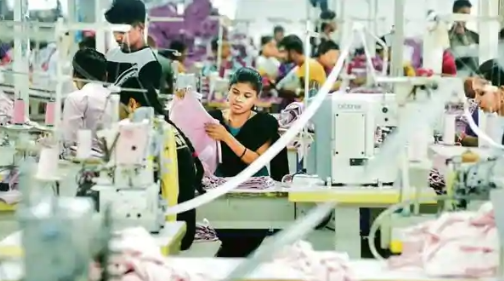COVID, MSMEs and Union Budget 2022-23

Image Courtesy: Livemint
Finance Minister Nirmala Sitaraman presented her fourth successive Union budget in the parliament on February 1, 2022. She announced that the next 25 years would be the ‘Amrit Kal’ for the Indian economy by focusing on inclusive development, energy transition, climate action, productivity enhancement, and financing of investments. Moreover, her 90 minutes speech gave no specifics regarding the budget allocations.
However, who will reap the fruits of the ‘Amrit Kaal’? God knows. We all have been witnessing the health and economic crisis that has come in a century since December 2019; it requires unprecedented policy reforms. However, this budget is quite disappointing from the common person’s eye. The honourable FM made no significant announcements that could reduce the burden of poor and middle sections of the society. ‘Atmanirbhar Bharat’ package also fails to help the poor and middle class of the country.
One of the sectors of the economy that has the potential to create employment and growth in the economy, which would help achieve FM’s vision of ‘Amrita Kal’ is the Micro, Small and Medium Enterprises (MSMEs).
National Sample Survey (NSS)-73rd round mentions the capacity of the MSME sector in employment generation in the country. Apart from the agriculture sector, this sector can absorb the Indian workforce due to its labour-intensive nature. In their research paper, Ali & Husain (2014) also argues that the MSME sector’s growth in developing nations like India is the prerequisite for the economy’s overall growth.
IMPORTANCE OF THE MSMEs
There are more than six crore MSMEs in the country- 36% are in trade, 33% are in services, and 31% in manufacturing. MSMEs play a significant role in the Indian economy as it gives employment to around 12 crore people. Moreover, it generates almost 30% of India’s GDP and contributes 50% to its total exports. Nearly half of the manufacturing output comes from this sector. According to the Annual Report of the Ministry of MSME, during 2016-17 to 2018-19, this sector grew by more than 10%, and their share in GVA increased from 32.2% to 33.5%.
Another essential thing is to consider in understanding the MSME sector is its composition. Micro enterprises comprise 99% of the MSME sector, and the share of Small and Medium enterprises is only 0.52% and 0.01%, respectively. This indicates the higher importance of Micro-enterprises within the MSME sector. Additionally, more than 95% of employment is generated by micro-enterprises. This sector also plays a vital role in achieving socio-economic equality, but it is not discussed here. Due to the facts mentioned above, we need the fiscal stimulus for this sector.
COVID, MSMEs AND BUDGET 2022-23
The sudden lockdown by the Government of India in March 2020 held all the economic activities at a standstill, and the MSME sector was not exempted from it. No sector is left without the adverse effect of the COVID, and due to the third wave-induced partial restrictions, this sector was hit hard again, which further aggravated the difficulties. In 2020, this sector faced the challenges of salary payments, loss of employment, reduction in the potential capacity, etc. Many enterprises still face the same problems in 2022 due to inadequate consideration by the policymakers in the previous union budget of 2021-22.
According to Rathore and Khanna (2021), the production capacity of the MS survey conducted by MSMEs reveals that approximately 43% of the firms changed their business model to tackle the COVID induced crisis, and 35% of firms took external financial help to survive the pandemic.
Another survey conducted by Dun and Bradstreet reveals that lack of market access, productivity improvement and access to finance were three significant challenges faced by this sector in the pandemic. All the surveys and researches indicate sufficient fiscal stimulus as a lifesaver.
The Cabinet committee approved the new definition of MSMEs on June 1 2020, and added the turnover criteria with the investment to define them. Economists and industrialists were divided into two groups to analyse how that would benefit the MSMEs to revive from COVID induced crisis. Let us play a waiting game and see what happens.
The overall allocation on the MSMEs has been increased by 26.71% to Rs 21,422 crore from Rs 15,699 crore in the last budget. However, the allocation for Khadi, Village and Coir Industries was reduced by 2.75% compared to the previous year’s revised estimates. In the current budget, FM announced the allocation of Rs 6,000 crore for five years to make MSMEs more resilient, competitive and efficient. However, the specifications are missing, and this allocation might not be proved sufficient to achieve the target. However, the budget allocation for technology up-gradation and quality clarification is reduced to Rs 80.72 crore from Rs 330 crore last year, a massive drop of more than 70%. Allocation for Interest subvention scheme also witnessed the whopping reduction of 99% and stood at only Rs 0.04 crore.
Another step taken is the extension of the ECLGS (Emergency Credit Line Guarantee Scheme) till March 2023. This scheme would help the MSMEs borrow more from the market as the government provides a guarantee to the banks and NBFCs. The total allotment under this scheme would be Rs five lakh crore. Most of the schemes deal with the supply side of the sector. However, we need more demand-side policy actions to fight the current crisis.
In conclusion, no major reforms and policies are constructed for this sector, specifically micro industries, which have a huge employment generation share within the MSME sector. Without focusing on the MSMEs, India could not achieve higher sustainable growth.
The author is a professor at the Department of Economics, St. Xavier’s College (Autonomous), Ahmedabad. The views are personal.
Get the latest reports & analysis with people's perspective on Protests, movements & deep analytical videos, discussions of the current affairs in your Telegram app. Subscribe to NewsClick's Telegram channel & get Real-Time updates on stories, as they get published on our website.
























